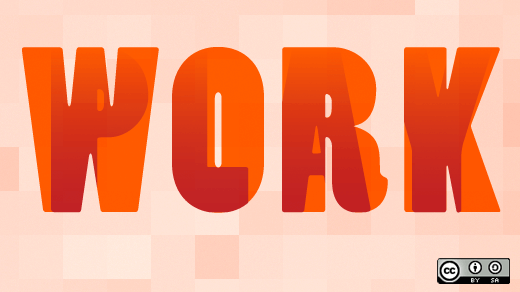How many times have you heard of an ex-employee saying “It just wasn’t fun anymore?” That’s a refrain all leaders ignore at their peril. There is a rich body of research and philosophy that argues that the psychological experience of play is a fundamental ingredient in engagement and satisfying, productive effort. As this Moonshot suggests, making work more playful is a serious and urgent undertaking with potentially dramatic implications for the performance and vitality of all organizations.
This article was originally posted on the Management Innovation eXchange (MIX), an open innovation project aimed at reinventing management for the 21st century.
Byron Reeves and I have been studying video games as examples of engaging play. The most compelling model that relates to the world of work is the wildly successful genre of massive multiplayer online games—the archetype being World of Warcraft. We matched up tasks in this one game to each item in an inventory summarizing every kind of task found in modern enterprises, from leadership to diagnosis to selling and communication. Think of it as group problem solving based on diverse skills of a volunteer workforce on a massive scale.
Leaders ought to begin thinking about these ideas right now because engagement is essential in a distributed workforce where we rely on employees’ tacit knowledge to deliver the results. Innovation and collaboration cannot be commanded, but must be elicited by the environment in which people work. The potent distractions of economic uncertainty at home and social media everywhere online have seriously upped the ante for maintaining an environment where demanding knowledge work takes place. And don’t forget the millennials we are trying to hire who bring expectations shaped by a decade of immersion in new media. The user interface of today’s enterprise software looks like a bad joke to them. Leaders who say “Welcome to our world, kid. Grow up,” will lose out to those who say “Help us make the world better with what you know.”
Making sure people are having fun at work is really about engagement. In this setting, think of the E-word as referring to a mental posture that leans towards favorable identification with the objectives of the enterprise and is exhibited by voluntary behaviors that support enterprise goals. Towers Perrin, Hay, Gallup and many others are happy to talk to you about the benefits of workforce engagement and how to measure it. Cross-company surveys convincingly show that higher employee engagement is correlated with higher productivity that translates into higher corporate earnings. And it has a big impact on the experience of customers who deal with your workers. Higher levels of engagement also correlate with better safety records and lower turnover. What’s not to like about that?
The standard prescription to boost engagement is Management 101 at this point: make the big picture meaningful, make goals clear and reasonable, give consistent feedback, and so on. More nuanced advice is to give people more recognition and autonomy in their jobs. It’s time for fresh ideas and a new set of robust and practical tools in this arena.
The good news is that the last few years have delivered a rich data set and design specs for a new way of working. We now have years-worth of the worked examples of millions of twenty- and thirty-something men and women spending hundreds of hours (and dollars) in imaginary worlds that require that they perform all of the elements of today’s collaborative information work. This research offers up powerful new ideas, tools, and approaches with serious implications for the organization of work and creation of engaging workplaces. Game designs are a nothing less than a rigorous and thoughtful application of advanced management tools that deliver a great work experience. Let’s be clear that this idea is far more radical than using games simply for training exercises or simulation. There’s nothing wrong with those applications, but we think game ideas can and should inform the real, everyday work of building and growing high-impact, profitable, and sustainable organizations.
Lets face it: most work is not “designed,” but simply takes place in settings and flows that have evolved haphazardly. The result of incremental boundaries is often overly-burdensome process or jobs where you sink or swim with too little structure. Imagine if jobs were as carefully thought out as the environment and reward systems in great games.
We’ve identified ten fundamental game ingredients in our research:
- Self representation with avatars
- Three dimensional environments
- Narrative context (great stories)
- Feedback
- Reputation, ranks and levels
- Marketplaces and economies
- Competition under rules that are explicit and enforced
- Teams
- Parallel communication systems that can be easily reconfigured
- Time pressure
Three-D virtual environments provide some of the eye candy that make games fun, but there is a very serious opportunity here. Not only do avatars compel the attention of their human operators, but think about the effort and cost that goes into designing our physical buildings to encourage productivity and collaboration. Virtual spaces can also shape behavior and interaction but at a vastly lower cost of implementation (and experimentation). Great games give feedback to players on every timescale relevant to humans, right down to second-by-second interactions—in comparison to typical performance reviews and ad hoc comments from supervisors. Game designers somehow get paying customers to perform dull, repetitive “work,” grinding away for hours when the result has meaning in the overall narrative of the game. Players accumulate richly textured reputations that are hard to spoof, much like a prolific seller on eBay. The games we study are driven as much by collaboration as competition and excel at answering the question: “What do I get when we win?” Synthetic currency and virtual goods provide a tapestry of opportunities for market forces to allocate scarce resources, in stark contrast to the barter systems that have grown up around internal corporate resource allocation.
To get the full benefit of these ideas, some bosses are going to have to adapt obsolete thinking that play is frivolous or irrelevant to productivity. HR and legal are going to have to give up some reflexes biased against greater transparency on employee performance. IT is going to have to adapt security policies and open up some ports on the network to take advantage of highly evolved game platforms including those that are delivered via the cloud. Whatever the resistance, this is happening.
We have yet to see an example of someone’s entire job embedded in a game, unless you count high-frequency security traders or air traffic controllers (just kidding, but its close), but we see it coming. Much sooner we will see deliberate use of game-like affordances in the design of work and the tools we give workers. For example, many companies are moving from experimentation to daily application of 3D environments where employees meet and collaborate online.
IBM is experimenting widely with serious games, including simulations like Innov8 which allows IT professionals to compete on a global scoreboard to solve productivity problems. McKinsey uses video games to test recruits for leadership potential and to assess team-building styles. Philips and Johnson & Johnson have used multiplayer games to improve collaboration between far-flung groups. Where work is already monitored by computer, as in call centers or point of sale terminals (Target Stores, for example), we are starting to see all kinds of creative feedback on productivity that is sometimes aggregated to provide leaderboards and to support competition and team advancement. Our favorite example so far is from the Windows Test group at Microsoft. Ross Smith and his team have been building games for several years to enlist help from colleagues outside their regular assignments. Most recently, they delivered astonishing value by recruiting multilingual colleagues to work in an online game where they helped provide quality control on translation of the thousands of pages of text that need to be shipped on time for Windows 7.
We believe that game ideas will be the most important force shaping the future of work. Innovations in entertainment media have long presaged the technology and culture of the workplace. Today’s multiplayer online games represent an extraordinary blending of human aspiration and performance with computing and communication technology. Watch for it soon in a cubicle near you.
Some questions to get you thinking about using games to take the work out of work in your organization:
- What are your ideas for using game ideas to make work more fun (and satisfying and productive)?
- Can you match up a serious corporate pain-point with some of the game elements described here?
- Would this application really move the needle for your organization (and how would you know)?
- What obstacles would you have to overcome to get it implemented?
- How soon can you get started and how can this community help you be successful?







Comments are closed.